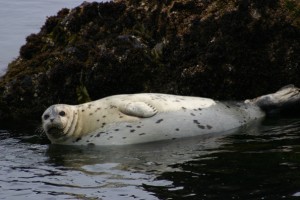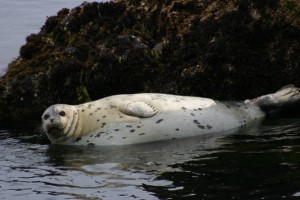 It’s Friday…So let’s keep this week’s trend of good news coming for ocean conservation. The Monterey Bay National Marine Sanctuary received relatively good overall health ratings in NOAA’s latest report. However, the typical issues afflicting all our coasts are no stranger nor any less of a threat to this valuable marine sanctuary.
It’s Friday…So let’s keep this week’s trend of good news coming for ocean conservation. The Monterey Bay National Marine Sanctuary received relatively good overall health ratings in NOAA’s latest report. However, the typical issues afflicting all our coasts are no stranger nor any less of a threat to this valuable marine sanctuary.
[The Report] indicates that the overall condition of the sanctuary’s marine life and habitat ranges from good (highest rating) to fair (moderate rating), but identifies several threats to sanctuary resources, such as growing coastal populations, agricultural and urban runoff, vessel traffic and marine debris.
“The sanctuary was designated because of its extraordinary resources and qualities, and this report confirms its continued vitality,” said Paul Michel, Monterey Bay National Marine Sanctuary superintendent. “But it also reveals that expanding human population and activities require adaptive management strategies to preserve the sanctuary today and into the future.”
Offshore and nearshore environments are generally rated in the report as good (highest rating) to fair (moderate rating). In the nearshore, habitat-forming plants and animals, such as surfgrass, kelp and sponges, are healthy, according to the report. However, rockfish, salmon, and some seabird and marine mammal species have declined.
Proximity to dense population centers and agriculture is a factor in nearshore water quality. The boundary of Monterey Bay National Marine Sanctuary reaches to the shoreline for 276 miles along California’s coast. Beach water quality issues that are common throughout California, such as elevated pollutant levels, are also observed within the sanctuary.
The report also reflects a fair to poor rating for water quality, habitat and living resources in the estuarine environment of Elkhorn Slough, a part of the sanctuary. The sanctuary has already partnered with multiple agencies to implement strategies to restore estuarine habitats and improve water quality and the health of plants and animals in Elkhorn Slough.
Emerging or poorly understood threats present new challenges to sanctuary resources. Global climate change is already impacting ocean chemistry, which is expected to affect marine biodiversity and biological productivity. Habitat quality and living resource conditions are impacted by pollutants, marine debris, changing ocean conditions and disease. Rising population growth in adjacent cities and counties, vessel traffic, as well as air and water pollution from outside the sanctuary’s boundaries are also a concern. New management strategies will be necessary to meet some of these emerging resource threats.



[…] This post was mentioned on Twitter by journowl and journowl. journowl said: Good news and threats for Monterey Bay health http://bit.ly/HeNEb #oceans #ocean #conservation […]